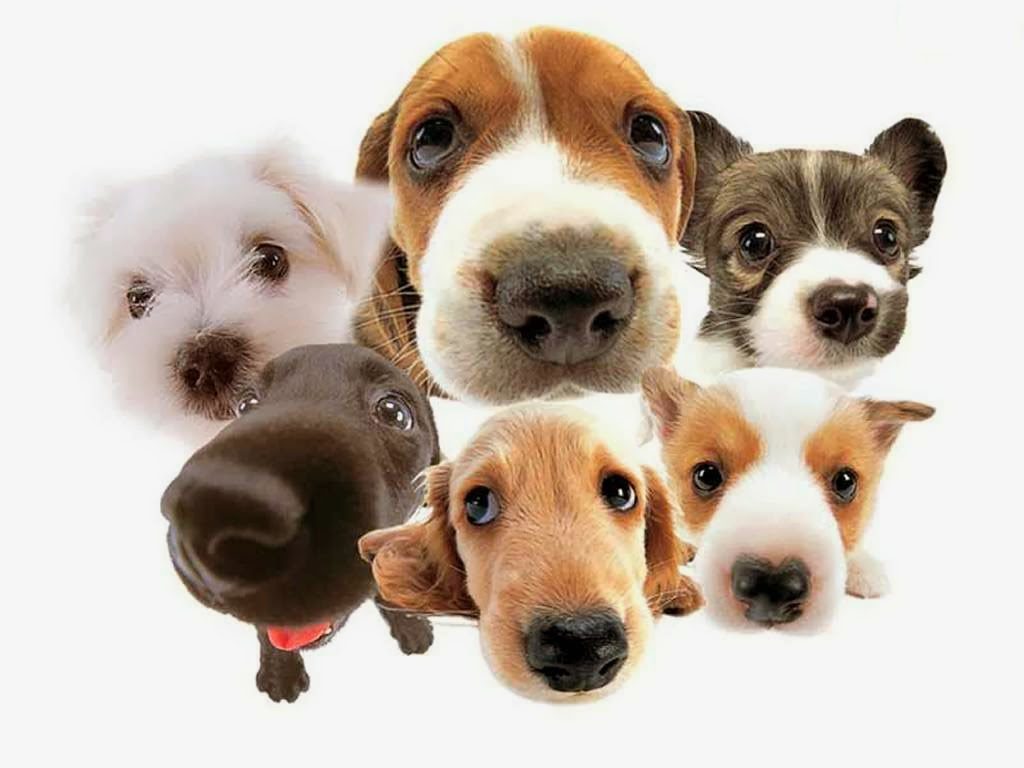Top Myths About your Dog!
A dog’s mouth is clean and sterile.
Not even close. Just think about where that mouth has been.
Most dogs are willing to lick their own and other dogs nether regions, steal cat feces from the litter box for a late night treat, and eat anything they can find on the ground.
Raw meat is the best diet for dogs.
This may sound good in theory. But the reality is it’s an unbalanced diet that can also be dangerous.
A raw-meat diet can leave dogs short on calcium and other nutrients.
Raw meat is also risky because it can carry harmful bacteria, disease, and parasites.
 |
| Photo by Rarnie McCudden from Pexels |
Dogs alpha roll each other
A study of captive wolves gave rise to this myth. Dogs roll onto their backs to expose their bellies to other animals and people to signal non threat. Even alpha dogs show their tummies to invite puppies and subordinate dogs to play. Dogs do not force other dogs onto their backs to prove leadership.
Dogs destroy furniture and other items in the house because they are angry
There may be many possible reasons for this, whether they are physical, emotional, or instinctual but none have to do with anger. Items that smell like you are often targeted because your scent comforts them.
When my dog looks guilty, it’s because he feels bad for doing something wrong
When your pooch puts on that doleful look, he must be guilty of something, right? Wrong! Your dog knows you are angry or upset and is using that body posture to try in dog language to get you to calm down and avoid punishment.
My dog understands me when I talk to him
While dogs can understand about 500 words and a very talented Border Collie named Chaser can understand thousands, when we talk to our dogs they focus in on a few words, our tone of voice, facial expressions, and our body language.
Dogs should have a litter before they are spayed
This is a myth that actually causes harm. In addition to contributing to overpopulation, allowing your dog to have a litter before spaying can make her susceptible to cancer later in life.
Table scraps are good for dogs
Although some table scraps are okay, seasonings like onions and garlic can be toxic for dogs.
A warm, dry nose signals a fever.
The temperature and moistness of your dog’s nose has nothing to do with his health.
The only way to know if he has a fever is to take his temperature (usually with a rectal thermometer). It should be 100-102.5 degrees.
A better way to tell if your dog is sick is if he’s not as hungry or active as usual.
Other signs of illness:
- Vomiting and diarrhea
- Urinating more or less often than normal
- Coughing and sneezing
- Discharge from eyes, ears, or nose.
Dogs can’t digest grains.
Contrary to popular belief, dogs’ digestive systems are quite robust.
Corn, rice, and beets aren’t just filler. They enhance a dog’s diet with essential nutrients and protein when pre-cooked, which is typically the case with commercially-prepared dog foods.
Dogs are omnivores and grains are a healthy part of their diet.
My new dog of the same breed will be just like my last one
Just like two children from the same family will be alike in some ways, they can be completely different in others. So while Johnny and Susie both have blue eyes, one might be easy going and the other very stubborn. Two dogs from the same breed can be very different too.
My dog should tolerate anything my children do
The reality is that young children often do not know how to interact with dogs in a caring considerate manner. Allowing children to sit on dogs, pull on their body, hit them with toys, disturb them while they eat may actually teach children the wrong lessons. Dogs are living, breathing, emotional beings that need to be treated kindly and with respect.
Dogs catch on to house training more quickly when you rub their noses in their accidents
Absolutely not. Punishing a dog for normal behavior like going to the bathroom encourages dogs to hide it better next time. Instead of punishing your dog when they do the wrong thing, reward them with praise or treats when they go in the right spot. This will be a more effective lesson.
Dogs learn only if you punish them
Absolutely not. Punishment can interfere with learning, can make behaviors worse and even cause fear aggression. Instead, you need to teach an alternative to bad behavior.
You should feed your dog according to the label instructions.
The label is just a starting point.
An extremely active dog or one with a high metabolism may require more. A less active dog would need less food to avoid becoming overweight.
Ask your vet what’s right for your dog. If your dog is at a healthy body weight, you should be able to feel his ribs easily beneath the skin.
An excited dog is happy to see you
It’s very easy to come home to a dog that is jumping, running around, or spinning in circles, and interpret that as the dog being glad you’re home. But that’s not what’s really happening. It’s a sign that your dog has more energy than he can handle in that moment.
Ignore him when he’s overexcited, then reward him with attention when he calms down.
A fenced yard should be entertaining enough
Our canine friends live in a very rich world of smells and visual input. The back yard is the same day in and day out. What dogs long for is the smell of a new scent, the chance to check out that next bush or tree and see the world. And when out in the yard all alone they can make bad decisions, become extremely territorial and threatening to others, or even become destructive or attempt to escape.
All dogs who are afraid of people have been abused
While it is unfortunate that many dogs are abused, many dogs that show signs of fear or anxiety around people and places suffer from another problem: limited socialization. If a dog lives in a very restricted environment during their sensitive time of emotional growth (from 8 weeks to 9 months) they may not have the tools to process, interact, and enjoy new experiences as they come along.
Dogs wag their tails when they are happy
Interestingly, not always. Dogs wag their tails when they are excited, happy, or to signal an imminent attack. A better indicator of happiness would be position of the tail and frequency of the wag. Slow, loose wags of the tail is usually a sign that a dog wants to be friends.
Dogs are jealous of the phone
The phone rings and all of a sudden your pet wants your attention. This can appear as annoying behavior but from your pets perspective, you are talking, no one else is around so you must be talking to them!
Dogs that are aggressive are showing dominance
On the contrary, it is often fearful dogs that act aggressively to help make a scary situation go away. A top dog will rarely show aggression because other dogs know he is the boss. However, you will sometimes see dogs using snarls to get their way or adolescent dogs acting up because they want to challenge the real boss.
Dogs that destroy the house when home alone are being spiteful
Dogs that go to the bathroom indoors bark and are destructive when home alone are most likely suffering from separation anxiety. They are unable to relax and be calm when separated from their human family. They need a behavior modification plan, treatment and perhaps medication to learn how to be home alone.
Dogs that growl and bite are mean
Dogs that growl are trying to tell people that they are uncomfortable and afraid. What they really want is for the threatening thing to go away or stop. By understanding and respecting the message we can teach dogs the proper responses and diminish the need for aggressive responses.
Dogs enjoy being hugged
Dogs and cats sometimes hug during mating or fighting. Although pets may enjoy nuzzling and getting affection from you, it is good to remember that your pet may confuse a hug with aggression.
Dogs and wolves are the same
While dogs and wolves share a common genetic connection, that is where it ends. Dogs have evolved over thousands of years to be partners with humans and interact with naturally in ways that wolves do not even with extensive training. Two great examples: dogs can follow a human’s pointing gesture and often “ask” people for help; wolves do not without specific training.



